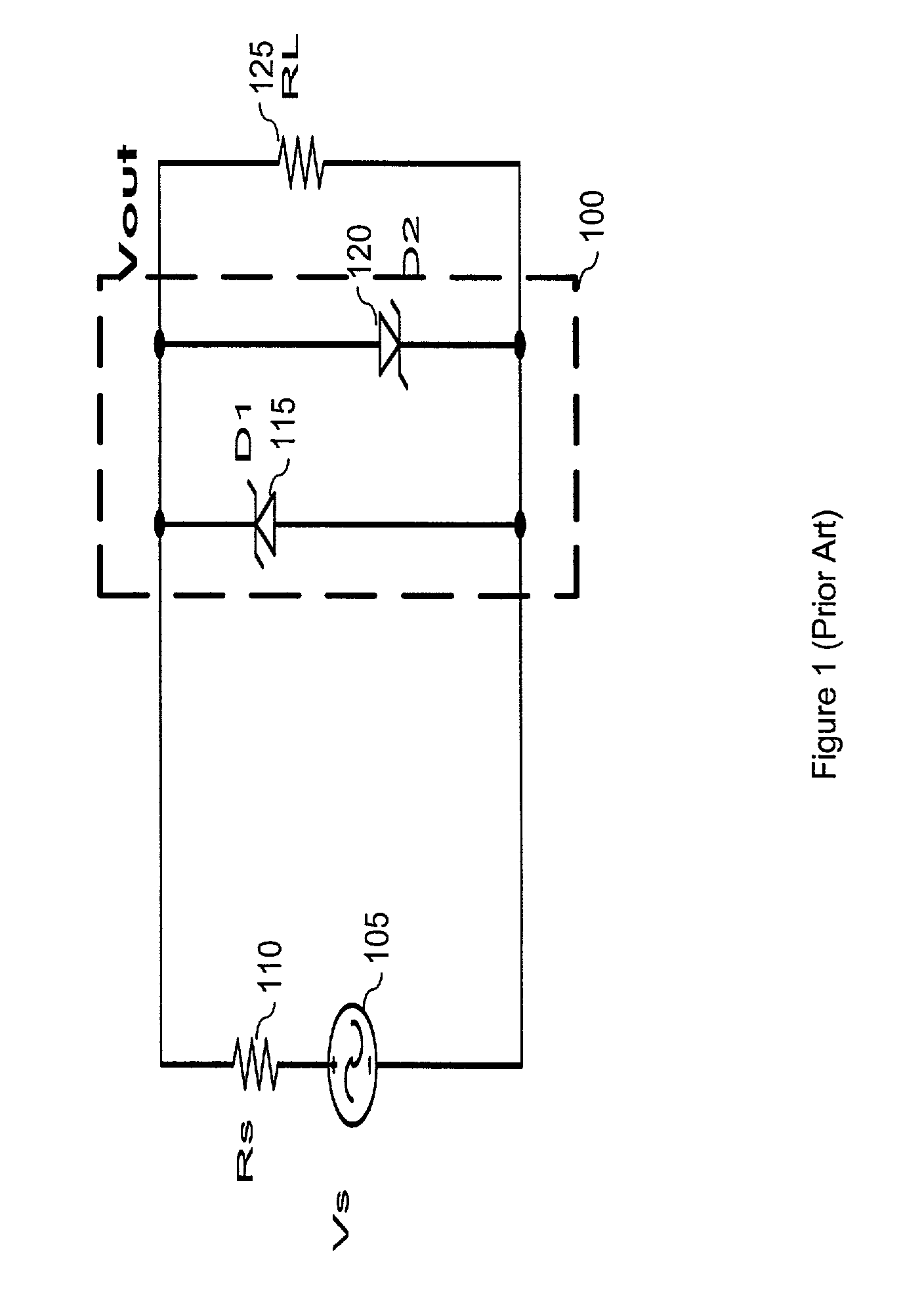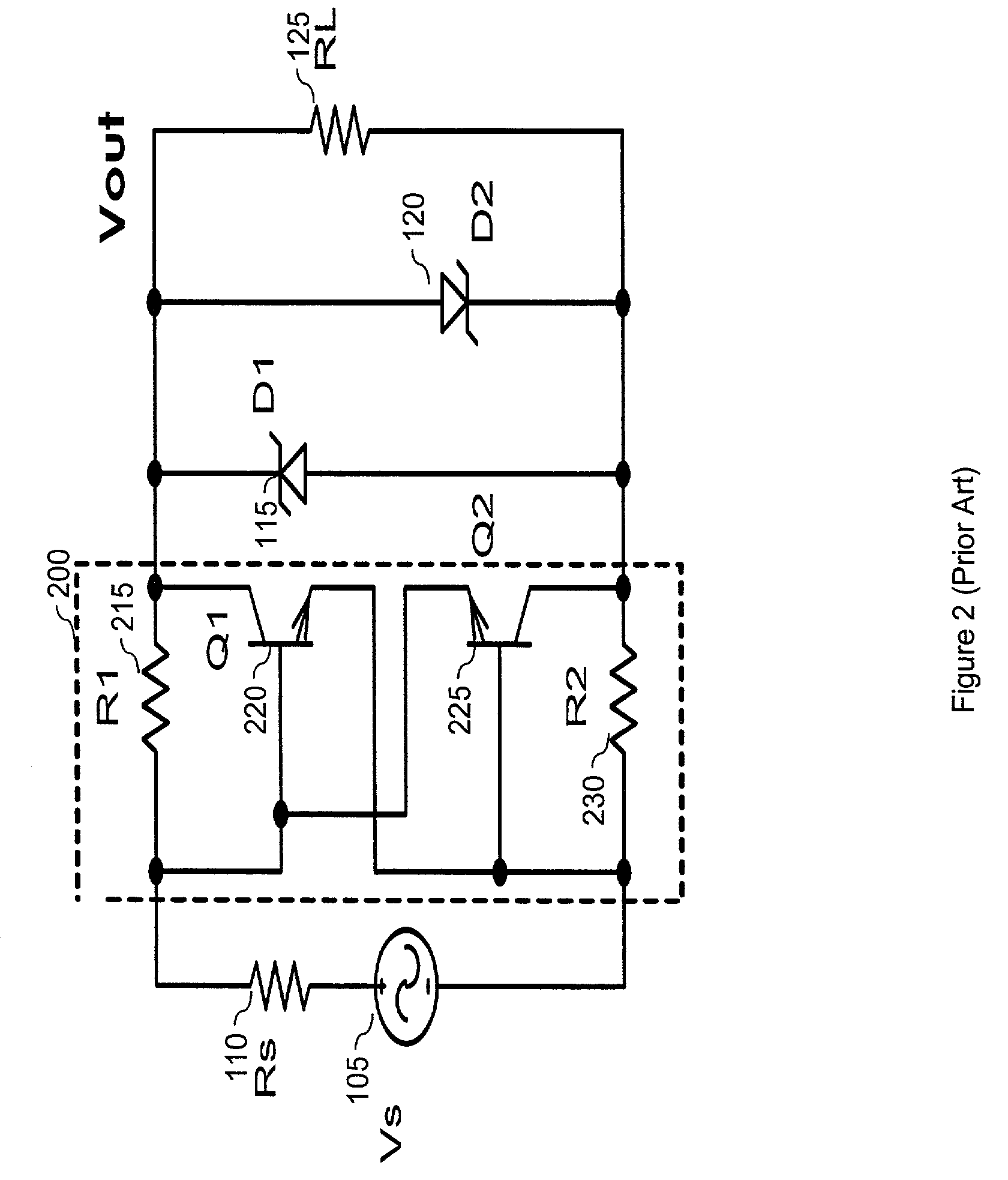Acoustic signal level limiter
a limiter and acoustic signal technology, applied in the direction of transducer casings/cabinets/supports, substation equipment, electrical transducers, etc., can solve the problems of fixed resistor networks that cannot adjust the amount of attenuation of electrical signals, and the transistors within the acoustic signal level relay circuit may be deeply saturated
- Summary
- Abstract
- Description
- Claims
- Application Information
AI Technical Summary
Benefits of technology
Problems solved by technology
Method used
Image
Examples
Embodiment Construction
[0034]In the following description, for purposes of explanation, numerous specific details are set forth in order to provide a thorough understanding of the invention. It will be apparent, however, to one skilled in the art that the invention can be practiced without these specific details. In other instances, structure and devices are shown in block diagram form in order to avoid obscuring the invention. Moreover, it should be noted that the language used in this disclosure has been principally selected for readability and instructional purposes, and may not have been selected to delineate or circumscribe the inventive subject matter, resort to the claims being necessary to determine such inventive subject matter.
[0035]A. System Overview
[0036]The present invention limits the level of an incoming electrical acoustic signal to a particular maximum threshold. FIG. 4 is a general block diagram showing an embodiment of the present invention. As shown, this embodiment operates between a ...
PUM
 Login to View More
Login to View More Abstract
Description
Claims
Application Information
 Login to View More
Login to View More - R&D
- Intellectual Property
- Life Sciences
- Materials
- Tech Scout
- Unparalleled Data Quality
- Higher Quality Content
- 60% Fewer Hallucinations
Browse by: Latest US Patents, China's latest patents, Technical Efficacy Thesaurus, Application Domain, Technology Topic, Popular Technical Reports.
© 2025 PatSnap. All rights reserved.Legal|Privacy policy|Modern Slavery Act Transparency Statement|Sitemap|About US| Contact US: help@patsnap.com



